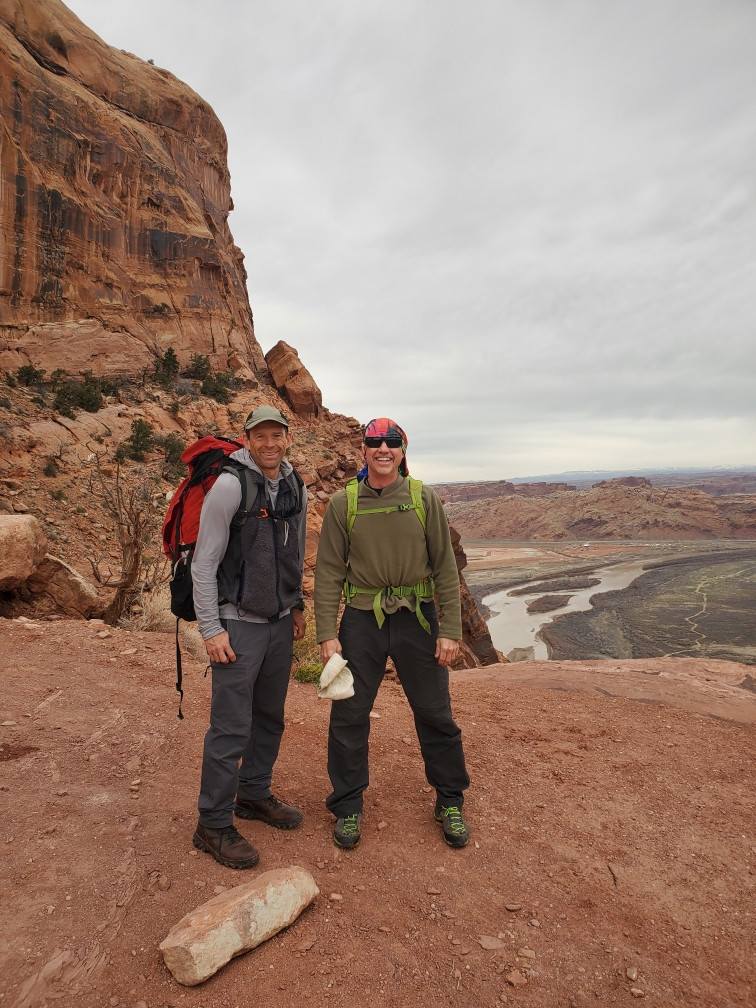Some information may be outdated.
How do you train to climb Everest when you live in the desert?
“The best way to get in shape to climb mountains with a heavy pack is to climb mountains with a heavy pack,” said Jason Ramsdell, a Moab local who left for his Everest expedition earlier this month. He took his pack on hikes in the La Sal Mountains, the Portal Trail, and the Moab Rim trail—any trails that could take him from lower elevation to higher elevation quickly made it on his training list. It was on the Moab Rim trail that he spotted another person also doing reps carrying a heavy pack, so Ramsdell struck up a conversation.
The other man—another Moab local, Matthew Fleischman—said he was also training for Everest. Ramsdell was astonished. What a small world! He asked a few more questions, finding that not only was Fleischman going the same time as Ramsdell, but the two were going with the exact same guide company on the exact same expedition.
“I almost fainted,” Ramsdell said.
The two trained together throughout the spring, discovering that both had a lifelong dream of summiting the tallest mountain in the world. Ramsdell is recently retired from the National Park Service—he started his career in 1992 as a backcountry ranger volunteer in Yellowstone, and continued for 30 years in 14 national parks; Fleischman owned the Slickrock Campground, and is also recently retired. Though Ramsdell and Fleischman didn’t know each other before bumping into one another on the Moab Rim trail, they’re planning to be tent mates throughout the expedition.
Summiting Everest is no small or quick feat. The expedition is a team of four—Ramsdell, Fleischman, a person from Iceland, and a person from Australia—and will take two months, from April to June. Ramsdell’s wife is accompanying him to base camp, a hike that will take about two weeks (the camp sits at an altitude of 17,000 feet). From there, Ramsdell, Fleischman, and the team with their guides will adjust to the altitude and wait for a weather window in which to break ground on summiting, which takes a few days.
The Kathmandu Post reported that Nepal’s Department of Tourism expects around 500 people to attempt the summit this spring.
Ramsdell has climbed big peaks in the past—he worked on a mountaineering patrol in Denali National Park, which was extremely inspiring for Everest, he said—but admitted that he’s a bit nervous about the upcoming expedition. There’s a lot that’s out of his control, weather and mountain traffic being the most worrisome, Ramsdell said.
“But I’m really looking forward to the culture and the adventure,” Ramsdell said. “I’m ready. I’m excited. Whatever happens, it’s going to be a great experience: it’s not about the summit, really, it’s about the journey.”
Appreciate the coverage? Help keep local news alive.
Chip in to support the Moab Sun News.





